![]()
![]()
![]()
Use LEFT and RIGHT arrow keys to navigate between flashcards;
Use UP and DOWN arrow keys to flip the card;
H to show hint;
A reads text to speech;
80 Cards in this Set
- Front
- Back
|
What was the effect of television and photography on illustration? |
Many illustrators lost their jobs due to photography; instead of illustrations being featured on magazine covers photos were featured. In regards to TV people purchased less magazines. Visual nature of TV makes illustration seem old fashioned. Fewer, smaller illustrations. Illustrations either retreat from commercial work (move to fine art) or embrace it (ex: Milton Glaser) |
|
|
Shift in business of illustration in 1960s-70s |
Aesthetics of Surrealism, Pop art, Dada, Minimalism, and other avant-garde genres used in television. Illustrators lost jobs to photographers as art directors made more use of photos. |
|
|
Significance of Push Pin Studios |
Showed shift to conceptual approach over narrative illustration; influence of graphic design firms; founded by Chwast, Glaser, Sorel, & Ruffins |
|
|
Al Parker |
Artist of the post war period; most experimental and influential artist of the 1950s; worked namely on concepts and "visual stoppers"; experimented with a variety of mediums and styles |
|
|
Push Pin Studios |
Showed shift to conceptual approach over narrative illustration; influence of graphic design firms; founded by Chwast, Glaser, Sorel, & Ruffins-- the studio that published the nonsense Almanac! |
|
|
Milton Glaser |
Co-founder of Push Pin studios; American illustrator and graphic designer; worked in variety of styles; created the iconic I HEART NEW YORK |
|
|
Seymour Chwast |
Co-founder of Push-Pin Studios; American illustrator, graphic designer, type designer, political poster artist |
|
|
Parker, The Veldt; Illustration for Stevie |
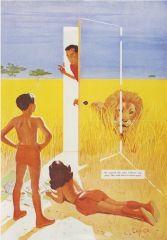
|
|
|
Glaser, Olivetti Valentine Poster; Dylan Album Cover |
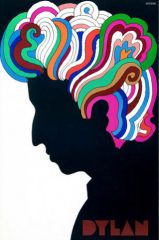
|
|
|
Chwast, End Bad Breath; The South from Push Pin Graphic Monthly
|
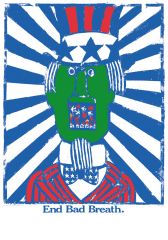
|
|
|
Chromolithography |
Process invented by Bavarian playwright, Alois Senenfelder, in 1796. Senenfelder used the process to duplicate scripts; also used early on for duplicating music scores. Jules Cheret is credited with reviving lithography in the mid-19th century “in a spectacular renaissance that would become known as the ‘color revolution.’” |
|
|
Influence of Japan on poster art |
Japan’s ports are forcibly reopened by the United States in 1853. Japanese prints, artwork, & decorative arts began reaching European capitals & the US. Both the subject matter and the style were hugely influential to European & American artists of the late 19th century (theater shows, tea houses, featured actors; daily life, geishas, landscapes, courtesans) |
|
|
Role of Urban Entertainment in Poster Work |
French entertainment was influential in regards to urban entertainment especially; Posters used to advertise goods & new forms of entertainment are very quickly are considered art in their own right. There is a “Poster Craze” in Paris |
|
|
Chéret’s Contribution to Posters |
credited with reviving lithography in the mid-19th century; "Father of the Modern Poster"; French lithographer and illustrator, pioneer of modern poster design; Chérettes = female figures. Promoted the poster as an art form through exhibition & publication. |
|
|
Representations of Women in Chéret, Toulouse-Lautrec, Mucha |
Cheret: Beautiful women with exaggerated bodies/bodily features that didn't have much to do with product being advertised. Toulouse-Lautrec: Colorful, lots of movement; portrayed women he knew Mucha: Beautiful, ethereal women inspired largely by Sara Bernhardt. |
|
|
Leonetteo Capiello |
Italian poster advertising art “The father of modern advertising” Created characters that personified/represented products |
|
|
Jules Chéret |
French lithographer and illustrator; credited with reviving lithography; "Father of the Modern Poster" |
|
|
Henri de Toulouse-Lautrec |
was a French painter, printmaker, draughtsman and illustrator whose immersion in the colourful and theatrical life of Paris in the late 19th century allowed him to produce a collection of enticing, elegant and provocative images of the modern, sometimes decadent, life of those times |
|
|
Alphonse Mucha |
Czech artist, advertising art, theatrical designs. Art Nouveau = “Le Style Mucha” "Spaghetti hair" |
|
|
Theophile Steinlen |
French Art Nouveau painter, printmaker, poster artist; fond of cats |
|
|
Toulouse-Lautrec, Moulin Rouge; Jane Avril (1893); Divan Japonais |
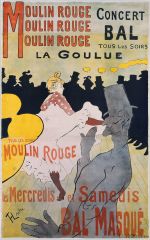
|
|
|
Mucha, Medee; Job |

|
|
|
Steinlen, Le Locataire |
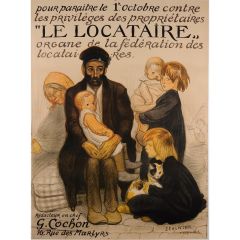
|
|
|
Capiello, Maurin Quina |
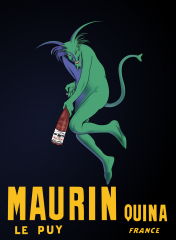
|
|
|
Chérettes |
female figures |
|
|
Belle Epoque |
the “beautiful era,” a period of peace & prosperity in late 19th century France (1870s – 1914). Posters used to advertise goods & new forms of entertainment are very quickly are considered art in their own right. There is a “Poster Craze” in Paris at this time. |
|
|
Art Nouveau |
an art movement characterized by sinuous lines and curves of natural forms; The movement embraced all genres of art to create an international style rooted in decorative forms and a high level of craftsmanship. |
|
|
Cassandre’s “Serial Poster” |
successive images expanding a concept; a group of posters that conveys a whole interesting idea through rapid succession |
|
|
1st comic strip |
Histoire de Monsieur Cryptogame, Rodolphe Töpffer |
|
|
1st merchandised character |
The Yellow Kid |
|
|
1st American Multi-Panel Comic Strip 1st to use “word bubbles” |
Dirks, The Katzenjammer Kids, March 23, 1924 |
|
|
First comic strip in which characters age |
Gasoline Alley (1918-1956) |
|
|
1st female syndicated columnist for Hearst |
Grace Drayton |
|
|
1st African-American female comic artist |
Ormes was the first AfricanAmericanfemale comic artist of great renown |
|
|
A.M. Cassandre |
was a French painter, commercial poster artist, and typeface designer; serial posters; boat posters |
|
|
Victor Moscoso |
b. 1936 Influenced by Mucha; Studied with Albers at Yale. 'psychedelic posters' |
|
|
Rodolphe Töpffer |
was a Swiss cartoonist, painter & author; published Histoires en Images (“Picture-Stories”); Sometimes called Father of the Graphic Novel |
|
|
Richard F. Outcault |
Inventor of the newspaper comic strip The Yellow Kid (1895-1898) Debuted in New York World,published by Joseph Pulitzer, 1895 Hogan’s Alley Buster Brown (1902) |
|
|
Rudolph Dirks |
The Katzenjammer Kids, March 23, 1924 Considered 1st American Multi-Panel Comic Strip 1st to use “word bubbles” One of Longest-Running Strips (1897 – today?) |
|
|
Winsor McCay |
Master of panel flow & page layout |
|
|
Frank King |
Started 'Gasoline Alley' |
|
|
Chris Ware |
b. 1967. architectural comics, sad subject matter 'Building Stories' |
|
|
Fanny Y. Cory |
Fanny Young Cory was an artist and illustrator best known for her comic strip Little Miss Muffet, syndicated by King Features. She did both art and writing on "Sonnysayings." |
|
|
Grace Drayton |
Grace Drayton was an illustrator of children's books, fashion pages, and magazine covers. She created the Campbell Soup Kids. She is considered to be one of the first and most successful American female cartoonists. |
|
|
Jackie Ormes |
known as the first African American woman cartoonist and created the Torchy Brown comic strip and the Patty-Jo 'n' Ginger panel. |
|
|
Barbara Brandon-Croft |
is an American cartoonist, best known for creating the comic strip, Where I'm Coming From, and for being the first nationally syndicated African-American female cartoonist. |
|
|
Joelle Jones |
is an American comic book artist. She is best known for creating Lady Killer, a comic series published in 2015–2016 by Dark Horse Comics which she illustrated and co-wrote with Jamie S. Rich. |
|
|
Marjorie Liu & Sana Takeda |
Marjorie M. Liu is an American New York Times best-selling author and comic novelist; Sana Takeda: comic artist |
|
|
Alison Bechdel |
is an American cartoonist. Originally best known for the long-running comic strip Dykes to Watch Out For, she came to critical and commercial success in 2006 with her graphic memoir Fun Home |
|
|
Cassandre, Normandie |
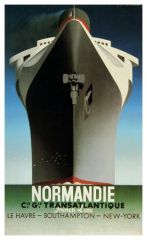
|
|
|
Moscoso, Quicksilver Messenger Service |
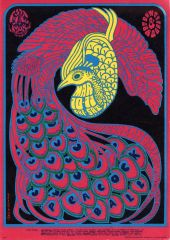
|
|
|
King, Gasoline Alley |

|
|
|
Ware, Stair Scene from Building Stories |
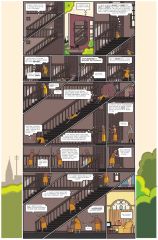
s
|
|
|
Drayton, Toodles & the Unfortunate Strawberry Tart |
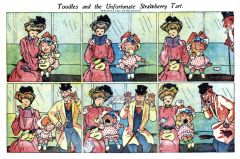
t
|
|
|
Ormes, Torchy Heartbeats |
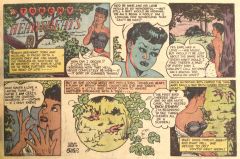
|
|
|
Joëlle Jones, Cover for Ladykiller #3 |

|
|
|
Marjorie Liu & Sana Takeda, Monstress #5 Cover, 2016 |
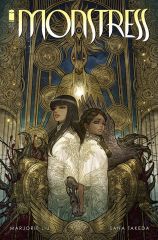
|
|
|
Panel flow & page layout |
Winsor McCay is considered the Master |
|
|
Kate Greenaway |
1846-1901 Grew up in London Father; was noted wood engraver; Mother was a clothing designer; Attended Slade School of Art |
|
|
Randolph Caldecott |
was an English artist and illustrator, born in Chester. The Caldecott Medal was named in his honour. He exercised his art chiefly in book illustrations. |
|
|
Beatrix Potter |
was an English writer, illustrator, natural scientist, and conservationist best known for her children's books featuring animals, such as those in The Tale of Peter Rabbit. |
|
|
Edmund Evans |
was a prominent English wood engraver and colour printer during the Victorian era. Evans specialized in full-colour printing, which, in part because of his work, became popular in the mid-19th century. |
|
|
Arthur Rackham |
British Illustrator that started as a reporter; Influenced by fairy painting (British fascination with fairies, nature, mythology), comes of age as half tone process becomes feasible. |
|
|
Edmund Dulac
|
Influenced by his rival, Rackham; Benefitted from market Rackham established for high-end gift books; Fully came of age during ½-tone process; technique does not rely on outline; Influence of exoticism, interest in costume and architecture |
|
|
Kay Nielsen |
Danish illustrator, Illustrated well-known classics and more obscure stories, Moved to California in 1930s, eventually worked for Disney Credited with “Ave Maria” and “Night on Bald Mountain” sequences in Fantasia |
|
|
Maurice Sendak |
widely considered the most important children’s book artist; 'Where the Wild Things Are' |
|
|
Jerry Pinkney |
Contemporary children’s book illustrator; won Caldecott for the Lion and the Mouse |
|
|
Edward Gorey |
Illustrator, Like Sendak, a darker, nonidealizedview of childhood and children |
|
|
Greenaway, Mother Goose |

|
|
|
Caldecott, Sing a Song of Sixpence |
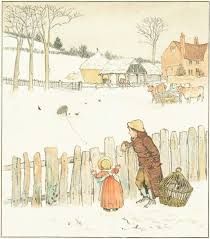
s
|
|
|
Potter, Two Bad Mice; Jemima Puddle-Duck |
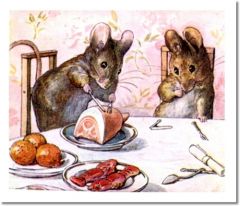
|
|
|
Rackham, A Midsummer Night’s Dream |

|
|
|
Dulac, The Firebird |
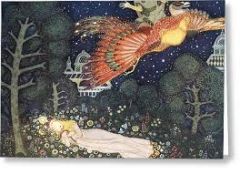
|
|
|
Dulac, Princess and the Pea |
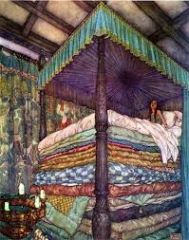
|
|
|
Nielsen, The Wave; She Whisked off the Wig |
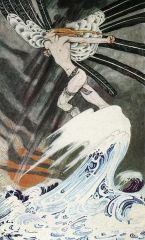
|
|
|
Sendak, Mr. Rabbit & the Lovely Present |
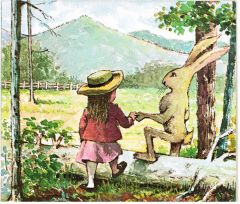
|
|
|
Sendak, Where The Wild Things Are |

|
|
|
Pinkney, Lion & the Mouse |
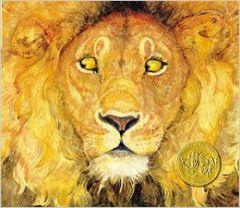
|
|
|
Gorey, Letters from The Gashlycrumb Tinies |
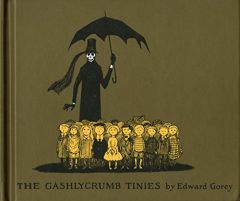
|
|
|
Chromoxylography |
Chromoxylography = printing on wood blocks |

